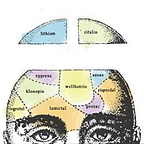Anatomy of an Opioid Epidemic
There is a quick, simple solution to our opioid overdose epidemic, and it was already used to end a U.S. heroin epidemic 100 years ago. It will become obvious once two major misconceptions are corrected:
1. Long-term opioid prescribing has not only been shown to not be helpful for chronic pain; it in fact causes it. It worsens pain by repeatedly causing tolerance and agonizing withdrawals (the main symptom of which is pain) to develop. The resultant suffering can only be curbed by successive, increasingly deadly dose increases. This fools users, who are unaware that they’re in unending withdrawals, into believing their pills are helpful and needed. Opioids also shut down the body’s production of endorphins. Thus, the only way chronic users can obtain any pleasure or tension relief is via pills; this adds to their desperation. All of this is analogous to how psychiatric drug use, though often helpful initially, ultimately can cause people to become chronically “mentally ill,” as Robert Whitaker showed. Just as there was no “mental illness” epidemic until psych meds were widely used, there was no chronic pain epidemic until long-term opioids were widely given.
Until 1990, doctors rarely gave opiates due to awareness of these issues: they were prescribed either briefly for severe pain from surgery/injury, or continuously for end-stage cancer (in which overdose is often more a goal than a concern). But today’s doctors dispense ten times as much — 200 million opiate prescriptions yearly, mostly for non-terminal clients. The average days-of-supply per script is still climbing: it’s now nearly 3 weeks; that’s long enough to produce tolerance and pain-worsening. And these scripts are regularly refilled. Such profiting by creating chronic suffering only occurs in the U.S.
2. Buprenorphine, which is now integral to most opioid addiction programs, is only able to reduce opioid cravings because it’s just another opioid. Like all opioids, it’s addictive, and euphoric in new users; it’s Finland’s most abused and lethal opioid. It’s often combined with a tiny amount of opioid antagonist (naloxone) under the brand name Suboxone. But naloxone is poorly absorbed orally, so it doesn’t block buprenorphine’s effect. Thus, youths who’ve had a taste of opioids and are tempted to ramp up their usage but can’t find their parents’ pills or get pain doctors to directly prescribe them, have a new source: they can get endless supplies by merely claiming to be heroin addicts hoping to quit. Real heroin addicts may use it to quit heroin, or to tide themselves over until their next fix or to sell on the street to raise cash.
So buprenorphine may more often be a new way to create addicts, and a gateway/enabler of heroin abuse, than it is a treatment. This could partly explain why overdoses really took off after it came to market in 2002. Is it wise to put addiction treatment into the hands of a field that thrives by creating addiction? Isn’t that like putting a fox in charge of a henhouse?
Rather than pump yet more opioids into the system, why not drastically cut them back to pre-1990 levels, by simply resuming enforcement of the 1914 Harrison Act? This law helped end that era’s heroin epidemic, by criminalizing the prescribing of opiates to maintain addiction. It led to the jailing of some MDs who did so; this scared most other MDs from following in their footsteps. Prescribers of any opioid longer than two weeks, other than for end-of-life care, should again risk prosecution. Perhaps their sentences should be longer than for street dealers, since at least with street dealers you know what you’re getting into; with doctors, it may be the last thing you’d expect.
To fully enforce the Harrison Act now, the 2000 Drug Addiction Treatment Act must be repealed since it undermined it by exempting buprenorphine-peddling from being deemed a violation. This is crucial, since Suboxone docs dole out 30-day opioid supplies like candy. Each sees hundreds of clients for 5-minute monthly office visits in assembly-line fashion. It’s so lucrative that even high-pay specialists like anesthesiologists often do it. The recent big rise in buprenorphine scripts was half as great as the recent fall in pain pill scripts. And only the brief-supply pain scripts fell. So the medical field appeared to curb its opioid-dealing, while really just playing a game of whack-a-mole. Suboxone docs, in particular, are nearly 10 times as likely to have been previously sanctioned for offenses like excessive narcotic prescribing.
Doctors recently also ramped up their drug-dealing by dispensing more stimulants for “ADHD.” All of this increase was in scripts for teenagers and adults; in fact, they’re now mostly given to teens/adults, in whom they’re euphoric and addictive. They can thus be gateway drugs not only to opioids, but also to other stimulants like cocaine or crystal meth. Maybe that’s why yearly overdoses involving these drugs doubled in the last three years: to 14,556 for cocaine; 10,721 for meth. No stimulant was ever shown to truly help any issue, so taking them off market is this crisis’s fix.
Originally published at www.madinamerica.com on December 2, 2018.
